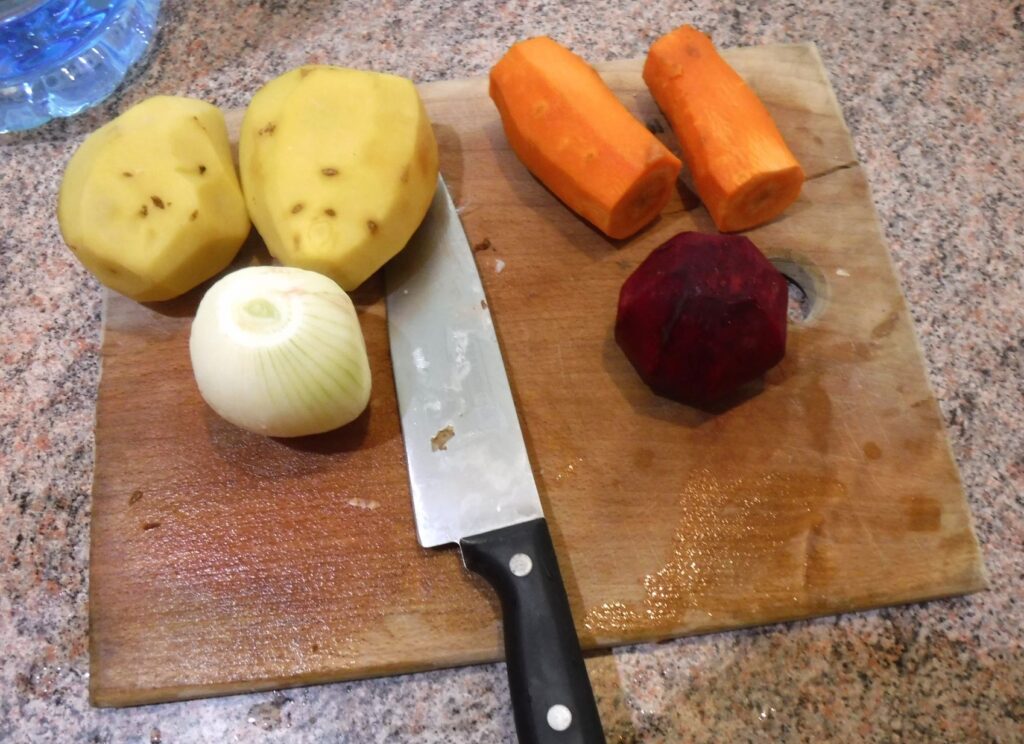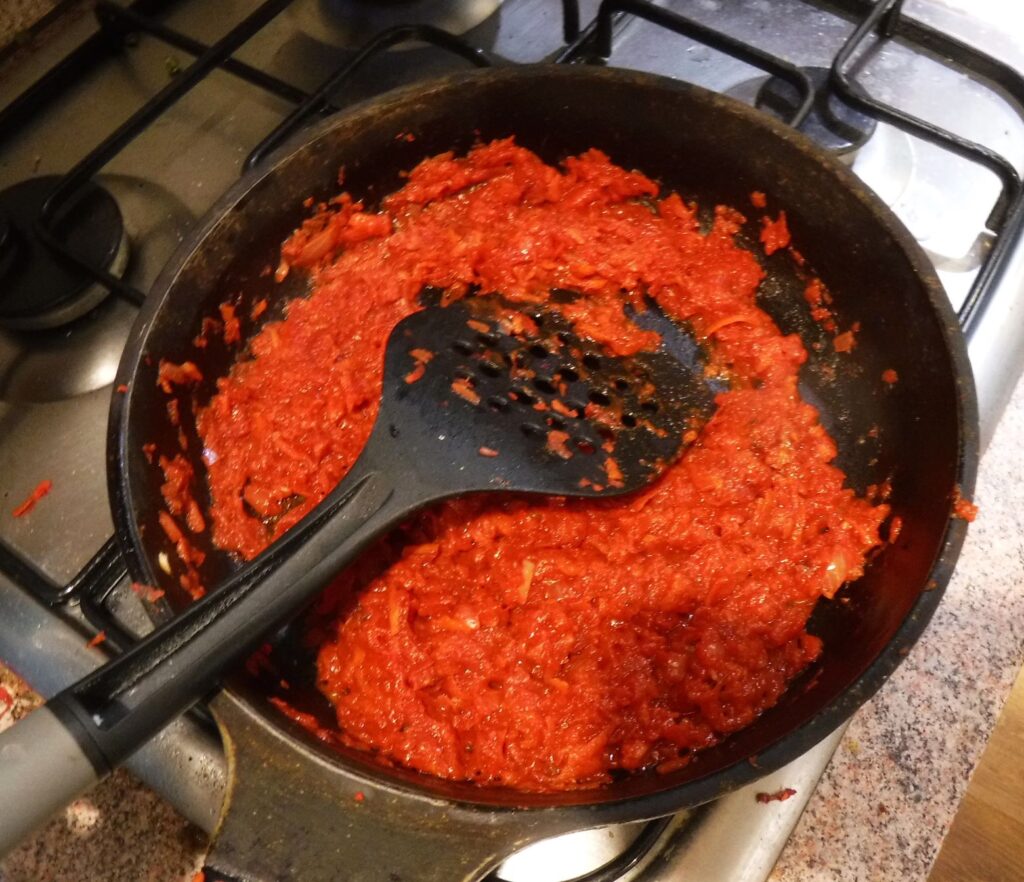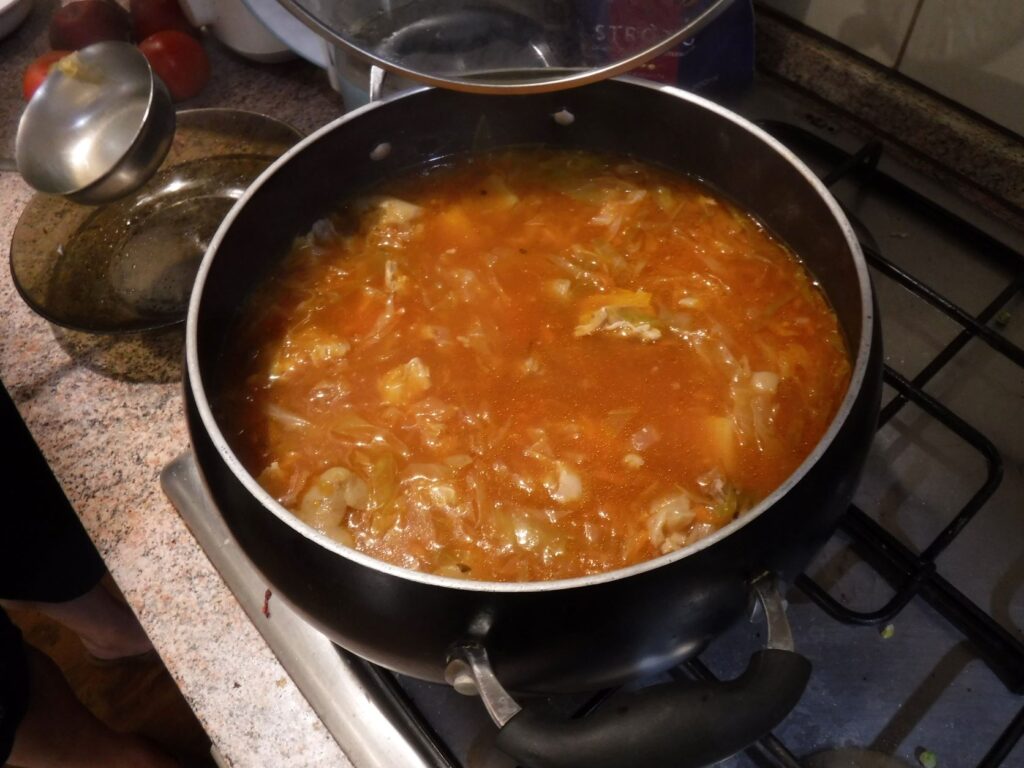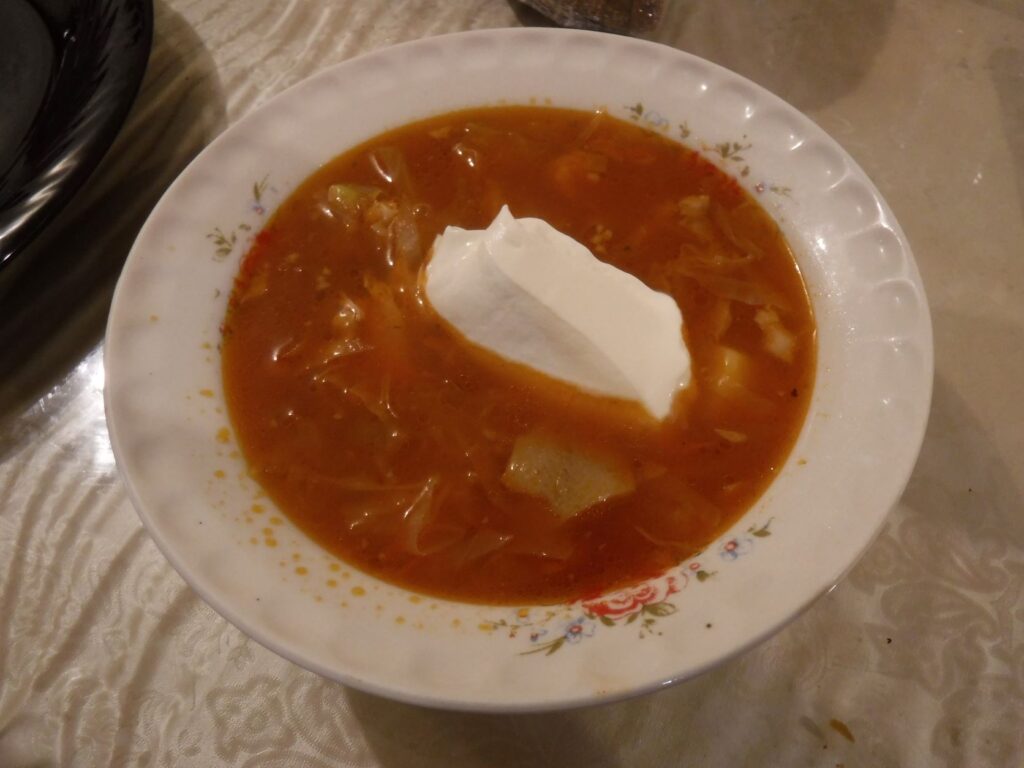I arrived back in southern Ukraine on a warm evening, pulling up outside the address I had been given on the outskirts of the city. I was relieved to get out and stretch after the eight hour drive, and breathe in the warm air which was sweet with the smell of summer gardens. The house where the NGO was now based was in a quiet, dusty cul-de-sac, and over the fence I could see a large block with several fruit trees and a sprawling grape vine. The gate opened and my friends appeared, giving me a warm welcome. Over a bar-be-que we caught up with each other’s recent adventures, and I met a Ukrainian volunteer, who I will call Alex, who had recently joined the team.
The following day, the rest of the crew had a well-earned day off. I was in the kitchen when Alex appeared, opened the fridge, and said: ‘I have some pork here…I think it is enough to make some borsch. Do you like borsch?’ I told him I did, and he suggested we would should make some together. Always up for a little cultural exchange, I promptly agreed.
For those unfamiliar with borsch, it is a traditional Ukrainian soup, full of goodies and perfect for avoiding freezing to death during the Ukrainian winter. Like most traditional fare, borsch recipes are rather varied, however the inclusion of cabbage is non-negotiable.
Alex put the pork piece (leg, bone in) on a slow boil, then we headed to the supermarket for a few ingredients we didn’t already have in the house. As part of my wholistic learning experience, Alex taught me the Ukrainian names of each of the vegetables required, and encouraged me to order half a kilo of chicken thighs from the deli in Ukrainian. Ukrainian people are very supportive of foreigners who try and learn a little of their language, and the girl at the deli was very patient with my stilted delivery and dodgy pronunciation. Armed with our borsch components, we headed home to start cooking.
Under Alex’s direction and watchful eye, I began to prep the veggies. First, I carefully washed and peeled the carrots, potatoes, and beetroot.

Remember how I said that borsch recipes are pretty flexible? Well, along with cabbage, beetroot is also an essential component of borsch. Except when it isn’t.
There’s your fresh Ukrainian produce. Right there.
Next, I grated the carrot and beetroot, finely chopped an onion, and cut the potato into cubes. While Alex added the chicken thighs to the pork that was boiling away in the pot, I was directed to fry the onion in a little oil. Next, the carrot and beetroot were added to the frying pan, along with a teaspoon of apple cider vinegar. Alex told me the vinegar helps to keep the colour from running out of the carrots and beetroot, and gives a nice tang to the soup.
After the carrot and beetroot had been frying for a few minutes, we added a small amount of tomato paste to the frying pan. A little hot water to thin the consistency and this component of the borsch was ready.
How’s the colour?

I then sliced the cabbage while Alex took the meat from the pot. The pork was removed from the bone, and cut into small pieces along with the chicken. The water that was used to boil the meat provides the stock for the soup, and now it was time to start combining the ingredients. We added the potatoes to the stock, and let it simmer until they were were cooked (but still firm). Then the contents of the frying pan, the cabbage, a pinch of salt, and the job was done. I have to say, it looked and smelt great!

Alex explained that the borsch had to sit for twenty minutes before we served it, so in the meantime we peeled some garlic, and grabbed the rye bread we had brought to go with the soup. From the fridge we retrieved the quintessential borsch condiment: sour cream. Alex also thinly sliced up some cured pork fat, which is a Ukrainian delicacy.
After waiting impatiently for the twenty minutes to elapse, we served the borsch. It was delicious. Despite it being about 34 degrees outside, we slurped away contentedly at the hot soup, and munched on the bread and raw garlic. (The first time I tried borsch was in an empty restaurant in an empty hotel, and it came with a side-serve of raw onion. At the time, I honestly didn’t know what to do with it.)

Making borsch with Alex was a great way to get to know my new Ukrainian workmate. And I reckon this flavoursome and filling Ukrainian soup will be back on the menu again pretty soon.
If you liked this post, you may also like Podcast Episode 5. Chicken Kyiv, NorthMacedonian Cuisine
Leave a Reply